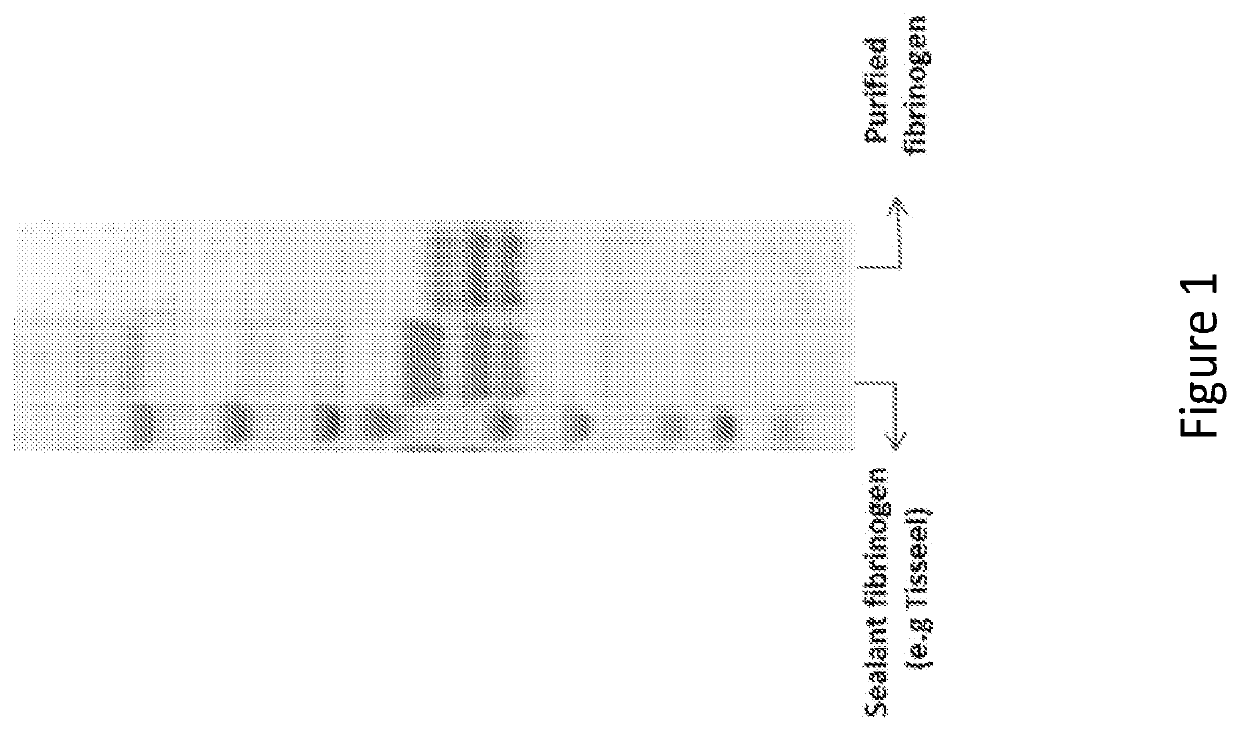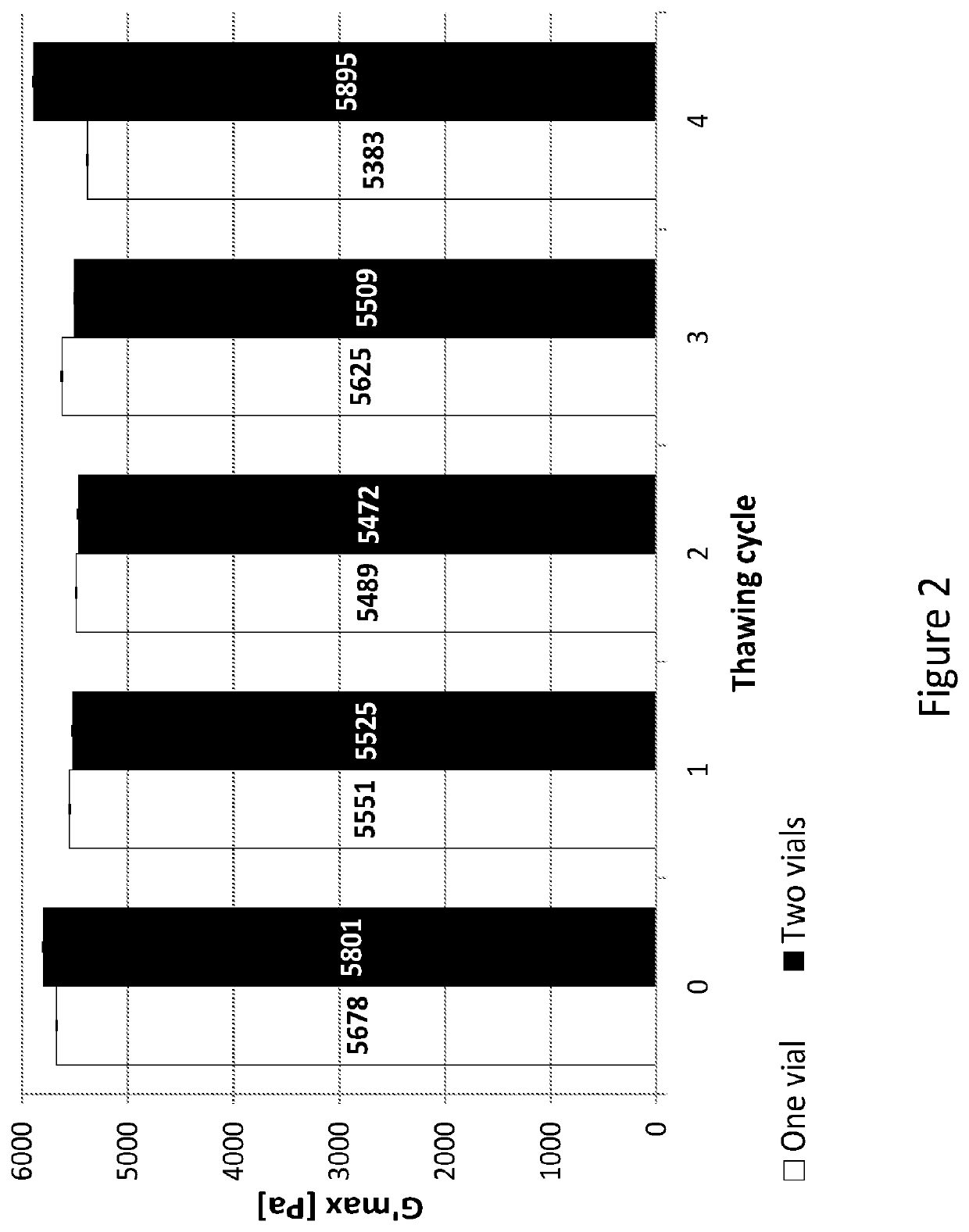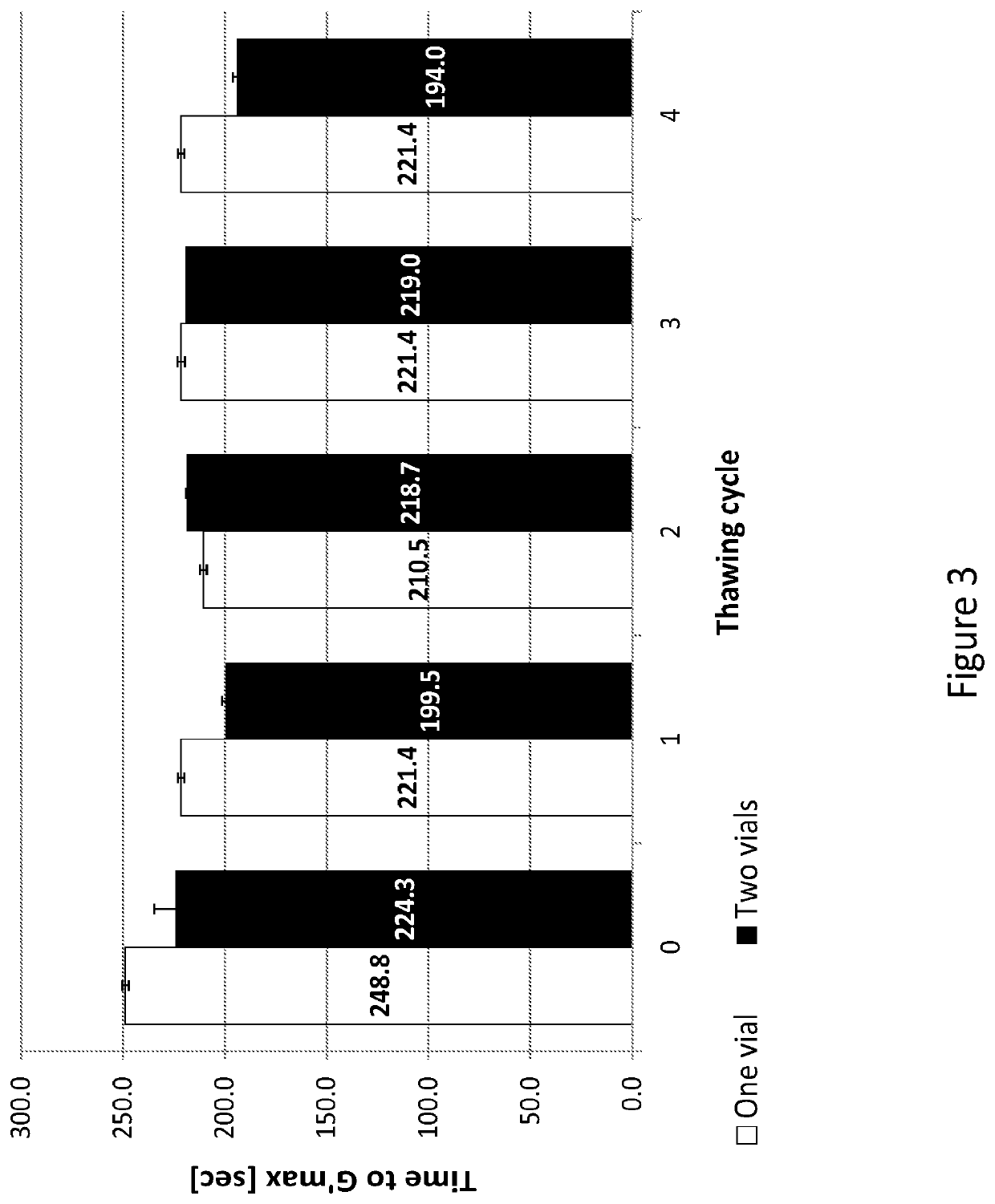Organic solvent free compositions comprising protein-polymer conjugates and uses thereof
a technology of organic solvents and conjugates, applied in the field of protein-polymer conjugates, to achieve the effects of reducing the likelihood of eliciting adverse reactions, enhancing biocompatibility, and increasing safety
- Summary
- Abstract
- Description
- Claims
- Application Information
AI Technical Summary
Benefits of technology
Problems solved by technology
Method used
Image
Examples
example 1
ve Example: Determination of Acetone Residue in Fibrinogen-PEG DA Hydrogel Composition Obtained in Accordance With Previously Disclosed Procedures
[0096]A chemical analysis was performed in order to determine the acetone content in the hydrogel composition prepared according to previously disclosed procedures (WO 2005 / 061018, WO 2008 / 126092 and WO 2011 / 073991).
[0097]A gas chromatography with flame ionization detection method (GC-FID, Hewlett Packard 5890) was utilized in order to determine the acetone content in the product. A
[0098]Head Space (HS) sample injection and a capillary GC Column ZB-624 (Length 75 m, I.D. 0.53 mm, Film thickness 3.0 micron) was used with Helium and Hydrogen (Gas flow of 1 ml / min) as a carrier gas and flame gas, respectively. Liquid sample (5 ml) was added into a crimp-seal glass headspace vial (20 ml). The sample vial was put in the auto sampler and analyzed against a calibration curve using acetone as a standard at 5 varying concentrations. The HS injectio...
example 2
on of PEG-DA-Fibrinogen Conjugates of Bovine Source (Purified Fibrinogen)
[0099]A 7 mg / ml solution of bovine fibrinogen (Bovogen Biologicals Pty Ltd, Melbourne, Australia) in 10 mM phosphate-buffered saline (PBS) with 8M urea was prepared with tris (2-carboxyethyl) phosphine hydrochloride (TCEP-HCl) (Sigma). The TCEP-HCl was added at a molar ratio of 1-1.5:1 TCEP to fibrinogen cysteines. The solution pH was corrected to 8.0 with NaOH. PEG-DA was dissolved in 10 mM PBS and 8M urea (280 mg / mL) to achieve complete dissolution prior to the addition of PEG-DA to the dissolved fibrinogen solution. The molar ratio of PEG-DA to fibrinogen cysteines was 3:1 (linear PEG-DA, 10 kDa). The mixture was reacted in a reaction vessel with a thermostatic jacket at a temperature of 25±1° C. for 3 h protected from light. The solution was then diluted with an equal volume of PBS and was transferred from the reaction vessel into the sample reservoir of a tangential flow filtration system.
[0100]Tangential ...
example 3
on of PEG-DA-Fibrinogen Conjugates of Human Source (Unpurified Fibrinogen Sealant)
[0103]A 7 mg / ml solution of Human fibrinogen (TISSEEL—Protein Sealant, Baxter, USA) in 10 mM phosphate-buffered saline (PBS) with 8M urea was prepared with tris (2-carboxyethyl) phosphine hydrochloride (TCEP-HCl) (Sigma). The TCEP-HCl was added at a molar ratio of 1-1.5:1 TCEP to fibrinogen cysteines. The solution pH was corrected to 8.0 with NaOH. PEG-DA was dissolved in 10 mM PBS and 8M urea (280 mg / mL) to achieve complete dissolution prior to the addition of PEG-DA to the dissolved fibrinogen solution. The molar ratio of PEG-DA to fibrinogen cysteines was 3:1 (linear PEG-DA, 10 kDa). The mixture was reacted in a reaction vessel with a thermostatic jacket at a temperature of 25±1° C. for 3 h protected from light. The solution was then diluted with an equal volume of PBS and was transferred from the reaction vessel into the sample reservoir of a tangential flow filtration system.
[0104]Tangential flow ...
PUM
| Property | Measurement | Unit |
|---|---|---|
| shear storage modulus | aaaaa | aaaaa |
| shear storage modulus | aaaaa | aaaaa |
| molar ratios | aaaaa | aaaaa |
Abstract
Description
Claims
Application Information
 Login to View More
Login to View More - R&D
- Intellectual Property
- Life Sciences
- Materials
- Tech Scout
- Unparalleled Data Quality
- Higher Quality Content
- 60% Fewer Hallucinations
Browse by: Latest US Patents, China's latest patents, Technical Efficacy Thesaurus, Application Domain, Technology Topic, Popular Technical Reports.
© 2025 PatSnap. All rights reserved.Legal|Privacy policy|Modern Slavery Act Transparency Statement|Sitemap|About US| Contact US: help@patsnap.com



